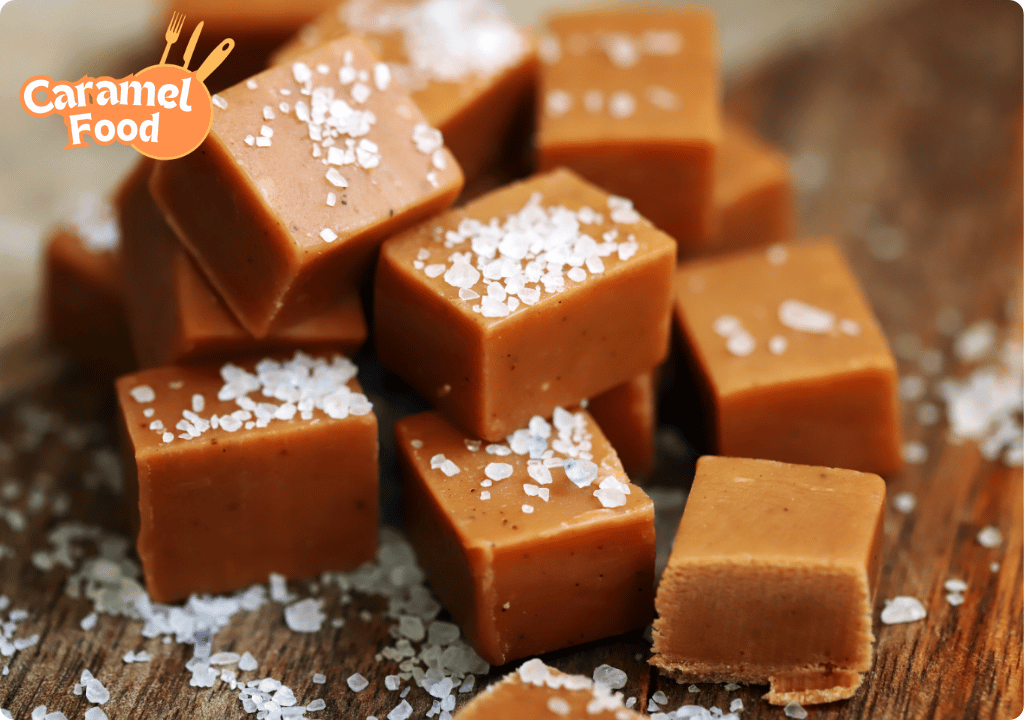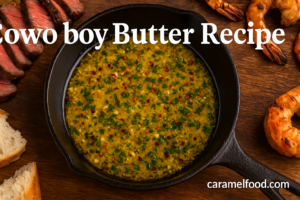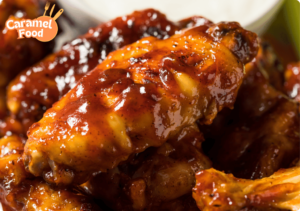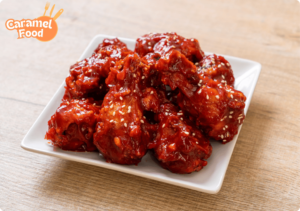The art of making soft caramel is a journey of sweet discovery. It’s a process that combines science, patience, and a touch of creativity.
Caramel, with its rich, buttery sweetness, is a beloved treat worldwide. Yet, the process of making it at home can seem daunting to many.
This guide aims to demystify the process. It will take you step-by-step through the art of making soft caramel, from understanding the ingredients to mastering the techniques.
Whether you’re a home cook or a baking enthusiast, this guide is for you. It’s also for those who simply love caramel and want to explore its homemade goodness.
We’ll delve into the science of caramelization, the importance of temperature control, and the art of achieving that perfect, melt-in-your-mouth texture.
So, let’s embark on this sweet journey together. Welcome to the art of making soft caramel.
The Sweet History of Caramel
Caramel has a rich and fascinating history that spans centuries and cultures. This delicious confection first appeared in the Arab world. Early versions date back to the ninth century, where sugar was cooked with water to create a sweet syrup.
The caramel we know today, rich in flavor and texture, began to take shape in the 17th century. European confectioners began experimenting with sugar and cream, developing softer, chewier versions.
Fast forward to the 19th century, caramel gained widespread popularity in America. It became a favorite in confections, leading to the creation of caramel candies and various dessert recipes.
Today, caramel is celebrated in kitchens around the world. It’s found in everything from gourmet treats to homemade goodies, each culture adding its unique twist and flavors.
This sweet treat’s evolution showcases its versatility. Its enduring appeal continues to charm our taste buds, making it a timeless favorite. Caramel’s history truly adds a layer of depth to the art of making it at home.
Soft Caramel vs. Chewy Caramel: Understanding the Difference
Caramel comes in many delightful forms, with soft and chewy varieties being particularly popular. These two types differ primarily in their texture and composition. Soft caramel is smooth and slightly pliable, perfect for savoring as it melts on your tongue.
Chewy caramel, on the other hand, offers a firmer bite. It demands a longer chew, delivering a more intense caramel flavor as it softens. The difference often lies in the cooking temperature and ingredient ratios.

Here’s a quick comparison:
- Soft Caramel: Lower temperature, more cream and butter, melts easily.
- Chewy Caramel: Higher temperature, less cream, firmer texture.
Both varieties have their own unique appeal and can be used in different recipes. Understanding these differences is key to tailoring your caramel to suit your culinary needs and personal preferences.
The Science of Sugar: Caramelization Explained
Caramelization is a fascinating process that transforms sugar into a rich, amber delight. It’s a browning phenomenon occurring when sugar is heated, causing its molecules to break down and reassemble. This creates new flavors and colors, giving caramel its signature taste and appearance.
Temperature plays a crucial role in caramelization. Sugars begin to caramelize when heated above 320°F (160°C). At this point, they undergo a complex series of reactions. These reactions form aromatic compounds responsible for the sweet, nutty, and buttery flavors we associate with caramel.
Understanding the science behind caramelization helps in achieving the perfect caramel. Monitoring temperature ensures precise control over the caramel’s flavor intensity and color. Each degree affects the taste, so having a keen eye on your candy thermometer can make all the difference. Mastering this balance ensures your caramel is always delectable and inviting.
Essential Ingredients for the Perfect Soft Caramel
Crafting the ideal soft caramel begins with selecting high-quality ingredients. Each component plays a role in texture and flavor. Selecting the right ingredients sets the foundation for your caramel success.
Key Ingredients:
- Sugar: The heart of caramel, often granulated white or brown for a deeper taste.
- Butter: Provides richness and smoothness, essential for the soft texture.
- Cream: Contributes to the soft and chewy texture, also adding a luxurious mouthfeel.
- Corn Syrup: Prevents crystallization, ensuring a silky finish.
- Salt: Balances sweetness and enhances the overall flavor.
Sugar is the core of caramel, where its natural sweetness and ability to caramelize forms the foundation. Butter adds a luscious creaminess, rounding out the texture with its rich milk fats.
Cream is crucial for achieving the desired softness. It interacts with sugar to avoid a brittle outcome. The choice between heavy and regular cream can subtly change the caramel’s texture.
Corn syrup’s function is vital in preventing unwanted crystallization. For those avoiding corn syrup, alternatives like honey or golden syrup can be used.
Finally, a pinch of salt elevates the flavors, adding complexity to the caramel profile. Each ingredient works harmoniously to produce the perfect batch of soft caramel.
The Role of Temperature: Why a Candy Thermometer is Crucial
Temperature control is key to perfect caramel. It dictates the texture, from soft to hard, with precision. A candy thermometer ensures this accuracy in your caramel-making process.
Without precise temperature monitoring, sugar can overcook quickly, leading to burnt flavors. This ruins the smooth texture you’re aiming for. A few degrees can significantly alter the final product.
The ideal range for soft caramel is typically between 235°F and 245°F. The thermometer guides you through this delicate range. With it, you can consistently achieve the perfect result. Knowing exactly when to remove your caramel from heat allows for precise results. This tool transforms the daunting task of sugar cooking into an achievable endeavor, ensuring smooth, velvety caramel every time.

Step-by-Step Guide to Making Soft Caramel at Home
Making soft caramel at home is both an art and a science. Start by gathering all the necessary ingredients. You’ll need sugar, cream, butter, and a hint of salt.
Begin with a heavy-bottomed saucepan to evenly distribute the heat. Add sugar and a small amount of water. Stir gently to ensure the sugar is uniformly moist.
Turn the heat to medium and let the sugar dissolve. Avoid stirring at this point to prevent crystallization. Instead, swirl the pan gently if needed.
Once the sugar is fully dissolved, increase the heat to medium-high. Allow the mixture to boil. Watch as it transforms into a beautiful amber color.
At this stage, reduce the heat slightly. Carefully add cream to the caramel. Pour slowly to avoid splattering, as the mixture will bubble vigorously.
Incorporate butter once the bubbling subsides. Stir constantly to combine, ensuring a creamy texture. Continue cooking until it reaches the perfect temperature using your candy thermometer.
Remove the saucepan from heat promptly. Stir in salt and any flavorings, like vanilla or bourbon. This adds depth to your caramel’s flavor.
Grease a pan or line it with parchment paper. Pour the hot caramel into the prepared pan evenly. Let it cool at room temperature for a smooth finish.
After cooling, cut your caramel into bite-sized pieces with a sharp knife. Grease the knife with a little butter for clean cuts. Enjoy the fruits of your labor.
Wrap each piece in wax paper or store in an airtight container. This prevents the pieces from sticking together. Now, you’re ready to share your soft, homemade caramel with friends and family.
Tips to Prevent Crystallization for Smooth Caramel
One of the biggest hurdles in making soft caramel is preventing crystallization. Tiny sugar crystals can ruin the smooth texture. To avoid this, ensure the sugar is completely dissolved before boiling.
A common trick involves using corn syrup or lemon juice. These ingredients interfere with sugar’s tendency to crystallize. They help maintain a silky, uninterrupted caramel consistency.
Keep sugar crystals off the sides of the pan as you cook. You can do this by covering the saucepan with a lid for a brief moment. This creates steam that dissolves any rogue sugar crystals on the sides. Another method is to brush the pan’s sides with a damp pastry brush. This simple step helps keep your caramel velvety smooth.
The Impact of Fats: Butter and Cream in Caramel Making
Butter and cream are essential for achieving soft caramel’s rich texture. These fats not only enhance flavor but also contribute to a silky, soft consistency. Without them, the caramel would be brittle and lack the desired mouthfeel.
When adding cream to your caramel, its temperature is crucial. Cold cream can cause the hot sugar to seize up, affecting texture. Warm the cream slightly before adding it to your sugar mixture for a smoother blend.
Butter plays a critical role in the caramelization process by adding depth and complexity to the flavor. It also contributes to the caramel’s creamy texture. The type of butter you use can enhance the overall taste, so opting for high-quality butter results in a more luxurious caramel. Together, butter and cream transform simple caramel into a luscious, indulgent treat.
Safety First: Working with Hot Sugar
Making caramel requires caution due to the high temperatures involved. Hot sugar can easily cause burns if not handled carefully. Always use heat-resistant utensils and protect your hands with oven mitts or kitchen towels.
Stand back when adding cream to the hot sugar mixture. The sudden change in temperature can create steam or splatter. A stable, slip-resistant surface for your saucepan will help maintain safety throughout the caramel-making process. Prioritizing safety ensures an enjoyable and incident-free caramel-making experience.
Cutting and Storing Your Homemade Caramel
Once your caramel has cooled and set, cutting it properly ensures uniform pieces. Use a sharp knife lightly coated with oil to prevent sticking. Score the caramel first, then make decisive cuts to maintain straight lines.
For easier handling, slightly warm the knife under hot water. This technique allows for smooth, effortless slicing through the dense treat. Work with care to avoid cracking or crumbling.
Proper storage keeps your caramel fresh and delicious. Wrap each piece in wax paper, ensuring it’s airtight. Store in a cool, dry place to maintain texture and flavor. Well-wrapped caramel can last several weeks, making it an ideal make-ahead treat.
Troubleshooting Common Caramel-Making Problems
Caramel can be tricky, but understanding common issues helps prevent mishaps. One frequent problem is crystallization. To avoid this, ensure all sugar crystals are dissolved before the mixture boils. Brush down sides of the pan with a damp brush if needed.
If your caramel turns grainy, it might be due to stirring after the sugar dissolves. Avoid stirring to prevent disrupting the sugar solution. Use a candy thermometer to maintain the right temperature throughout the process, reducing risks of texture issues.
Burnt caramel is another potential hurdle. Always keep a close eye on your caramel as it cooks. Use a heavy-bottomed pan for even heat distribution. If you notice a burnt smell, remove it from heat immediately to salvage what you can. With these tips, you can overcome most caramel-making hurdles.
Flavor Variations: From Classic Vanilla to Salted Bourbon
Enhance your caramel with various flavor additions for delightful results. Classic vanilla is a popular choice for its subtle enhancement. Simply add a teaspoon of pure vanilla extract after removing the caramel from heat.
For a sophisticated touch, try salted bourbon caramel. The addition of bourbon brings warmth and depth, while a pinch of sea salt balances the sweetness. Add these after cooking the caramel, adjusting amounts to your preference.
Explore other exciting flavors to create unique caramels:
- Espresso for a coffee-infused kick.
- Cinnamon for a spicy twist.
- Orange zest for citrus notes.
- Cocoa powder for a chocolatey blend.
The possibilities are vast with just a few additions. Experimenting with different spices and extracts opens a world of caramel possibilities. Always start with small amounts and taste as you go. This ensures your final caramel balances flavors perfectly.
Vegan and Alternative Ingredient Options for Soft Caramel
Creating vegan soft caramel is simpler than it seems. You can substitute dairy ingredients with plant-based alternatives like coconut milk and vegan butter. These provide the richness needed for a soft texture.
A common concern is caramel’s reliance on heavy cream. Opt for full-fat coconut milk, which matches the creaminess of dairy, ensuring a luscious result. This swap also adds a subtle coconut flavor to the caramel.

For those avoiding corn syrup, consider brown rice syrup. It prevents crystallization, much like corn syrup. This syrup can be found in many health food stores, providing an excellent option for a caramel free from processed sugars. Incorporating these alternatives, you can enjoy the same delicious caramel while accommodating dietary preferences.
Caramel Sauce: A Drizzly Delight
Caramel sauce adds a luxurious touch to many desserts. It’s known for its smooth, pourable consistency that enhances anything from ice cream to brownies. Making it at home allows you to control its flavor and texture.
To achieve a silky sauce, start with sugar, water, and a splash of cream. The key is dissolving the sugar completely and avoiding stirring while it heats. This prevents crystallization, ensuring a smooth sauce.
Adding butter at the end enriches the sauce, giving it a glossy finish. For an extra flavor twist, try adding a pinch of salt or a dash of vanilla. Once mastered, you’ll find endless uses for your homemade caramel sauce, from drizzling over pancakes to elevating your morning latte.
Pairing and Serving: Complementing Your Caramel Creations
Pairing soft caramel with other foods creates delightful culinary experiences. Its rich, buttery profile complements a wide range of flavors. Consider combining it with bold contrasts like dark chocolate or crisp apples.
When serving, think about texture contrasts, too. Soft caramel pairs well with crunchy nuts or flaky pastry. These combinations enhance the eating experience, balancing creamy with crunchy or flaky elements.
For beverages, caramel is wonderful alongside rich coffees or robust teas. A drizzle of caramel sauce over a cup of coffee adds a sweet, decadent touch. This interplay of flavors can elevate both the drink and the caramel, making each bite or sip a pleasure. Experimenting with different pairings helps you discover new favorites, ensuring your caramel creations always shine.
The Joy of Sharing: Caramel as Gifts and Treats
Homemade caramel makes for a thoughtful and delicious gift. Its sweet, inviting flavor evokes warmth and care. Packaging caramel in decorative boxes or jars adds a personal touch, making it a perfect present for any occasion.
Sharing your caramel creations brings joy not just to you but also to those around you. Whether giving them as holiday treats or tokens of appreciation, homemade caramel brings smiles. The craftsmanship involved in creating caramel delights becomes a shared experience, spreading happiness with every bite.
Conclusion: The Endless Possibilities of Homemade Caramel
The art of making caramel offers endless possibilities. From soft and chewy to smooth sauce, each variety brings something special. Experimenting with flavors and textures adds excitement to the process.
Creating caramel at home is more than just cooking; it’s a journey of discovery. With practice, you’ll master techniques and develop your own unique touch. The joy of crafting homemade caramel enhances every dessert or occasion, bringing satisfaction to both maker and recipient.
Here are some frequently asked questions (FAQ) about soft and chewy caramel:
FAQ: Soft Caramel vs. Chewy Caramel
1. What is the main difference between soft and chewy caramel?
- Soft caramel is smooth and melts easily in the mouth, while chewy caramel has a firmer texture that requires more chewing before it softens.
2. How do the ingredients differ for soft and chewy caramel?
- Soft caramel typically contains more cream and butter, while chewy caramel has a higher sugar content and less cream, which contributes to its firmer texture.
3. What temperature should I cook the caramel to achieve a soft texture?
- Soft caramel is usually cooked to a temperature between 235°F and 245°F (113°C to 118°C).
4. Can I make chewy caramel from a soft caramel recipe?
- You can adapt a soft caramel recipe to make it chewy by using less cream and cooking it to a higher temperature, typically around 245°F to 250°F (118°C to 121°C).
5. How can I prevent my caramel from crystallizing?
- To prevent crystallization, ensure that all sugar is dissolved before boiling and consider adding corn syrup or lemon juice to help inhibit crystallization.
6. Are there any vegan options for soft and chewy caramel?
- Yes! You can use plant-based alternatives like coconut milk and vegan butter instead of dairy ingredients to create both soft and chewy caramel.
7. Can I use flavored extracts in my caramel?
- Absolutely! You can enhance your caramel with flavored extracts like vanilla, almond, or peppermint to add a unique twist to your creations.
8. How should I store homemade caramel?
- Store your caramel in an airtight container at room temperature. If individually wrapped, you can keep them in a cool, dry place to maintain freshness.



